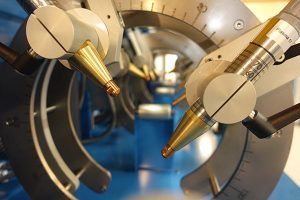Tantec was founded in Denmark in 1974. Ten years ago the company developed its first customized station for surface treatment. Today it is a leading manufacturer of standard and customized plasma and corona systems for surface treatment of plastics and metals to enhance adhesion properties.

Plasma pre-treatment has become one of the most common processes used for surface refinement. Source: Tantec
Recently Tantec improved its surface treating technology with ProfileTEC – a plasma treating system for EPDM-rubber profiles. It is now possible to treat multiple surfaces and difficult configurations with one-pass coverage, consistency and convenience.
In practice, plasma pre-treatment has become one of the most common processes used for surface refinement. The method increases the surface tension of plastics before they are printed, laminated or coated. This surface treatment improves inter-layer adhesion and promotes adhesion of the spread coating compound or printing ink.
The final effect achieved by the treatment depends on various parameters, including electrode efficiency, duration of the corona discharge, the type of material being treated, the temperature and moisture, any contamination, the surface morphology and similar factors.
Corona treatment eliminates the inefficiencies, safety hazards, and product damage potential of open flame treatment, chemical surface preparation and sanding techniques, while offering improved bonding results as well.
To improve the adhesion qualities, the surface is modified using potential free discharges. Using plasma enables the treatment of a broad range of materials without having to change treatment heads. A simple, yet highly effective process for sponge dense and TPV materials.
As the Danish company reports, ProfileTEC completely replaces processes such as roughening up, fluoride treatments with gas or the use of primers. A customised unit usually consists of 4-16 treating heads and is capable of handling high line speeds (20-25 meters per minute depending on the type of profile) and complex parts made of conductive and non-conductive rubber. The system increases the surface tension from 34 to 50 mN/m – which is the tension level required for the best adhesion possible today. The system can be used both in the extrusion line and in fabrication.

















